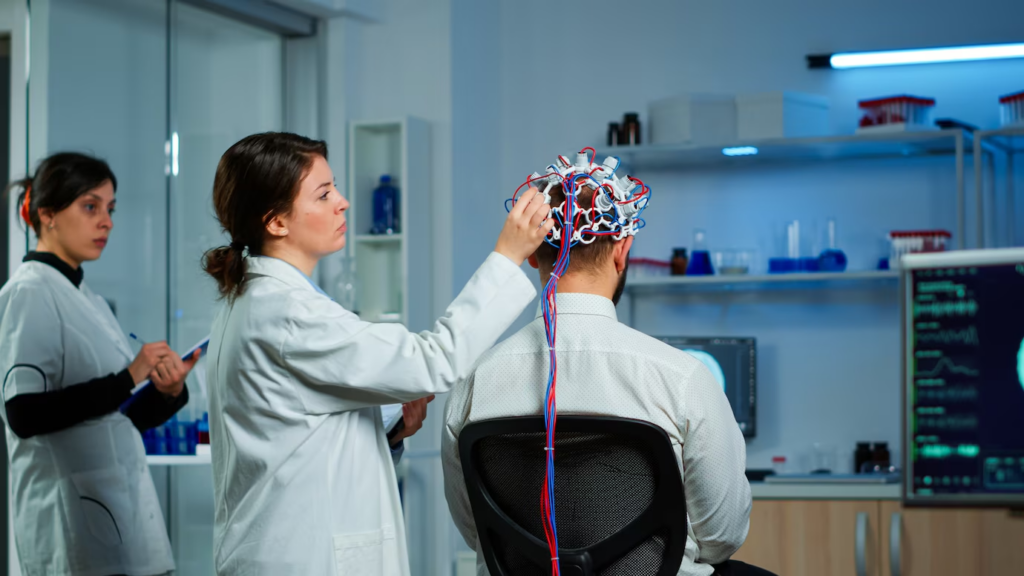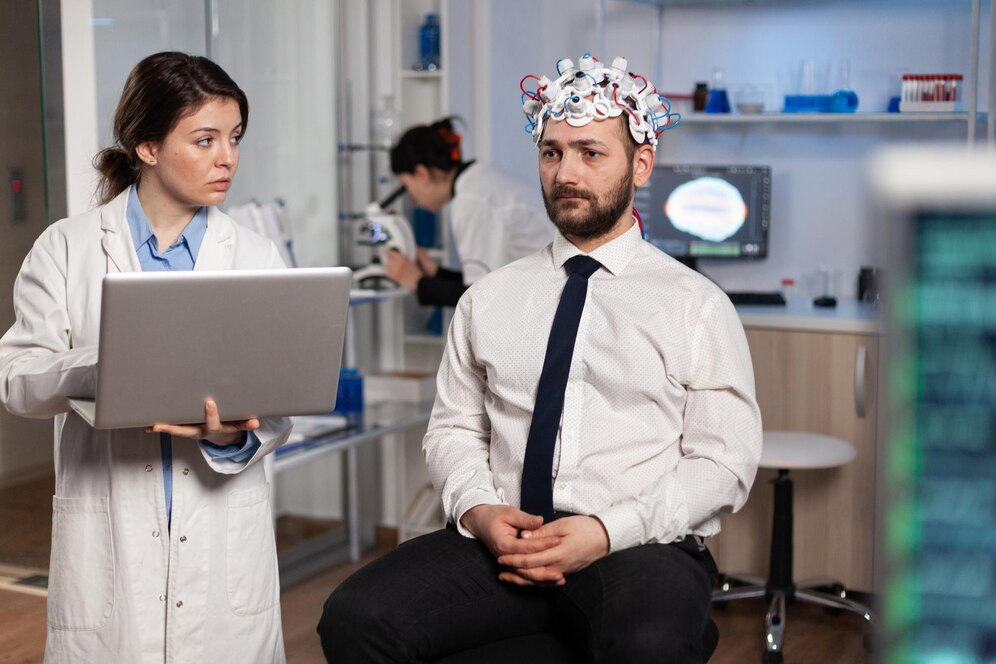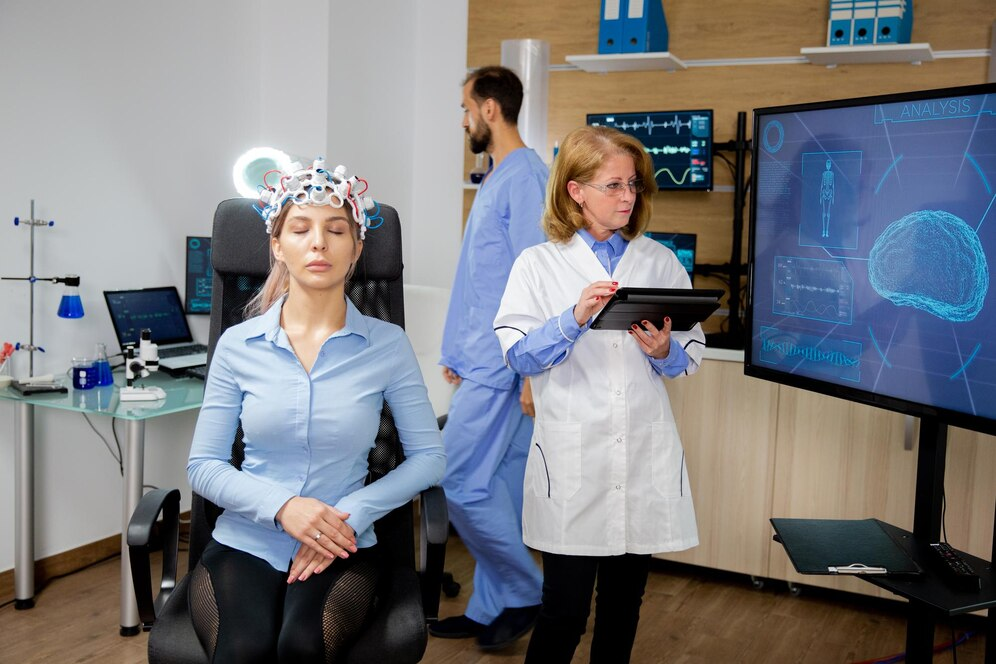
Neurofeedback and biofeedback treatments are a class of therapies that aim at achieving voluntary control of some bodily functions without employing invasive techniques. The distinction is that neurofeedback is based solely on brain activity while there are other forms of biofeedback that incorporate other aspects such as heart rates, muscle tension, etc. These methods help in coping with stress, anxiety, and chronic pain.
It’s within these general principles that individuals can be able to control themselves. Therefore, this document addresses some of the most frequently asked questions about these therapies, answers them in brief, and provides visual aids, if necessary, to enhance comprehension.
What are the key principles of neurofeedback?
The key principles of Neurofeedback are based on training the brain to self-regulate its activity. It involves monitoring brainwaves and providing real-time feedback to encourage balanced patterns. Techniques often include visual or auditory cues to guide brain function. The goal is to improve mental health, focus, and emotional stability.
Sensors attached to the scalp detect brainwave activity for Neurofeedback. The feedback provided to the individual through visual or auditory means in real time helps them reshape their brainwave patterns. As an example, when a participant achieves a target level of brain activity, he or she may trigger pleasant sounds as reinforcement.
In this way, the brain is trained to stay at a pacified state without external assistance eventually resulting in improved mental abilities as well as emotional stability. Techniques of neurofeedback have been successfully deployed to treat attention deficit hyperactivity disorder, anxiety, and sleep related problems thus enhancing mental health.
How does biofeedback help in managing stress?
Biofeedback helps in stress management by teaching individuals to control physiological functions like heart rate and muscle tension. It uses sensors to provide real-time feedback on body responses, enabling conscious adjustments. Techniques include breathing exercises and muscle relaxation for stress relief.
One such method, known as biofeedback, involves the use of electrodes on the subject’s body to record various physiological activities like heart rate, skin heat and muscle contractions. This information can be represented either visually or acoustically so that recognition of such body responses associated with stress is facilitated.
For instance, it can be displayed that heart rate comes up during stress, and therefore deep breathing or tensing and relaxing specific muscle groups can urge the user to practice. Such techniques help individuals reducing their level of stress thus attaining a favorable health status. Chronic pain, anxiety, tension headaches and other discomforts are treated with biofeedback and the quality of life improved.

What techniques are used in neurofeedback therapy?
Neurofeedback therapy uses techniques like EEG (electroencephalogram) to monitor brainwaves. Techniques include auditory and visual feedback, like games or sounds, that guide the brain toward optimal functioning. It trains the brain to alter its activity, enhancing focus, mood, and relaxation.
The neurofeedback therapy gets rid of epileptic seizures with the help of EEG sensors strapped onto the scalp for measuring the activity in the brain. Feedback is given depending on the patterns of active brain waves through audio-visual interaction that alters the form of play or utilization of sounds.
For example, a certain game cannot advance unless a particular action is performed by the brain, thus, balancing both attention and concentration. After several sessions, the brain can do this on its own, leading to improvements in attention, emotional control and stress management. It can also be applied in more than one and not stereotypically because each person requires a different approach in treatment.
How does biofeedback differ from neurofeedback?
The main difference between biofeedback and neurofeedback is biofeedback involves monitoring various physiological functions, like heart rate and muscle tension, while neurofeedback specifically targets brainwave activity. Biofeedback uses devices to track bodily responses, whereas neurofeedback uses EEG to guide brain function. Both promote self-regulation and stress management.
The main distinction of biofeedback and neurofeedback is their emphasis. Biofeedback deals with such physiological activities as heart rate, skin heat, muscle tension, and is more comprehensive. It makes use of sensors and provides feedback so that one can purposefully change some of these functions of the body. Neurofeedback primarily uses EEG to record and read brainwaves.
Feedback can be given through auditory or visual prompts and the aim is to teach the brain to adopt better states of balance. Self-regulator abilities refer to the supervision and management of the brain’s activities, while some passive feedback means on the body’s functionality. All of them however play crucial roles in dealing with stress and anxiety and other related disorders.
What conditions can neurofeedback and biofeedback treat?
Neurofeedback and biofeedback are used to treat conditions like anxiety, ADHD, chronic pain, and sleep disorders. Neurofeedback focuses on brainwave regulation, while biofeedback targets physiological functions. Both methods help individuals gain control over stress responses, improving mental and physical health.
Particularly, Neurofeedback can be successfully used on neurological disorders that are caused due to brain wave imbalance, such disorders involve anxiety, depression and sleep disorders amongst other impulsive disorders like ADHD. neurofeedback is effective in helping the patients train themselves into healthier functional activity such as control over attention, regulation of the heart & emotions and good quality sleep.
Biofeedback on the contrary focuses on stress related disorders as well as those that involve the autonomic system, these disorders can be chronic pain, Primary tension headache, and Hypertension. This provides ability to the person to learn certain physiological responses like muscle tension, heart rate or skin temperature. And they work in a way that offers people self-control, and therefore, the symptoms can be managed positively for the better.

What equipment is used in biofeedback sessions?
Equipments used in biofeedback sessions are various sensors and devices like electromyography (EMG) for muscle tension, electrodermal activity (EDA) sensors for skin conductivity, and heart rate monitors. These tools provide real-time feedback, helping individuals learn to control their physiological responses for better health.
In biofeedback sessions, various types of sensors are utilized according to the type of physiological function that is being focused upon. The EDA sensors look for skin conductance tests, while the EMG sensors shear measure tension of the muscle. Heart rate monitors are useful in monitoring cardiovascular events and evaluating the stress response of the body.
Skin temperature sensors can also be used for measuring relaxation or stress. The users receive the feedback of such devices in the form of auditory or visual signals, which help the person to perform mental activities such as voluntary muscle contraction or deep breathing. Such instantaneous feedback assists users in learning how to control stress, pain, and other disorders.
How long does it take to see results with neurofeedback and biofeedback?
Results from neurofeedback and biofeedback vary, but individuals often notice improvements within 10-20 sessions. The duration depends on the condition and individual response. Consistent practice leads to better outcomes, with lasting benefits in mental focus, stress reduction, and overall well-being.
Depending on the individual’s condition, the degree of the problem, and how willing one is to put in the effort, the time it will take to experience and recognize improvement using neurofeedback and biofeedback is different. Usually, changes begin to occur by the 10th to 20th session, but some individuals can begin reaping the benefits even before.
The practices are rewarding due to devoting oneself to consistency and routinely trying in an effort to alter how the brain and body are regulated. A series of therapy assessments spaced over a number of months would be necessary for conditions like ADHD or chronic anxiety to be effectively managed and treated. Better concentration, less mental unrest and emotional turmoil, and enhanced life satisfaction are some of the expected additives.
Conclusion
One of the aspects that neurofeedback and biofeedback have taken further is the self-regulation capability of the brain and body to enhance one’s mental and physical well-being. With the help of such methods as EEG training and providing feedback to the subjects, such as heart rate data, they can manage stress, anxiety, or other situations in which these techniques can help. The conclusions that clarify this point cannot be achieved without regular implementation of the therapies. Such exploring these questions allows people to take the right steps for themselves in neurofeedback’s and biofeedback’s evolution in wellness.
